Battle of The CPU Stock Coolers! 7x Intel vs 5x AMD, plus an EVO 212
by E. Fylladitakis on July 22, 2016 9:00 AM EST- Posted in
- Cases/Cooling/PSUs
- CPUs
- AMD
- Intel
- Cooler Master
- Cooler
The AMD Coolers
Five AMD-specific coolers are going to be tested in this review, four being stock coolers that accompany AMD’s CPUs and one being a cost-effective cooler from Cooler Master.
| Vendor | Cooler | Common Bundle | Core | Fins | Fan (mm) |
Mass (g) |
| AMD | 1A213LQ00 | AMD “Kabini” AM1 | Alu | Alu | 50 | 75 |
| FHSA7015B | Several AMD Lines | Alu | Alu | 70 | 164 | |
| AV-Z7UB408003 | Black Edition Phenom | Alu +2 Cu HP |
Alu | 70 | 374 | |
| Wraith (125W) | AMD FX-8370 AMD A10-7890K |
Cu +4 Cu HP |
Alu | 90 | 304 | |
| Cooler Master / AMD | HK8-00005 | AMD FM2+ “Godavari” | Alu | Alu | 70 | 125 |
The first AMD cooler that we are having a look at is the 1A213LQ00 that accompanies AM1 “Kabini” core CPUs. It is by far the smallest heatsink of this review and of very simple design, with a full aluminum body, a tiny circular base and a small 50 mm fan. As a matter of fact, it is so small that it can be easily mistaken for a motherboard’s chipset cooler. Kabini CPUs however have very low power ratings, which makes this small cooler more than enough for them.
AMD’s FHSA7015B is perhaps the most widely used stock CPU cooler in existence, as the company has been supplying it alongside with tens of CPUs across nine different platforms (FM1, AM3+, AM3, AM2+, AM2, 1207, 940, 939 and 754 sockets). It is a rather simple design entirely made out of aluminum, with a square base and straight fins extending to all four sides of the cooler.
Cooler Master’s HK8-00005 is actually the stock cooler supplied with AMD’s high end “Godavari” FM2+ CPUs. It can be bought as an aftermarket cooler for just $14 and should fit all of AMD’s sockets/CPUs since socket 754. It is a relatively small cooler, about the same size as the FHSA7015B, using a similar 70 mm fan, with an aluminum base and fins. The main difference is that there are two heatpipes running across the base of the cooler, transferring thermal energy from the core directly to the edges of the fins.
The AMD AV-Z7UB408003 was perhaps the first “advanced” cooler that came supplied alongside a CPU. It was first seen supplied as the stock CPU of AMD’s Phenom X4 9600 processors back in 2008 and can still fit on the latest FM2+ processors. It has large aluminum fins attached to a solid copper base. Four heatpipes run through the copper base, transferring thermal energy directly up to the center and edges of the fins. The short fan is embedded inside the fins in order to reduce the overall height of the cooler.
The AMD FX-8370 “Piledriver” processors come with the first stock cooler that has been baptized with a nickname rather than a series of digits and letters - the Wraith. AMD’s Wraith cooler looks almost identical to the AV-Z7UB408003, and its core design is, but everything is larger. The Wraith has larger fins and thicker heatpipes, with a full size 90 mm fan mounted on top of the cooler. At least for the metal part of the cooler, it almost looks as if someone took the AV-Z7UB408003’s schematic and simply pressed the “scale” button, increasing everything by about 25%. Despite the increase in size, the fins are not as dense and the copper base is a little thinner, resulting to a reduction in raw mass. Although the core design may be the same, the significantly superior fan should significantly improve the performance of the Wraith over that of the AV-Z7UB408003 that it is based upon.


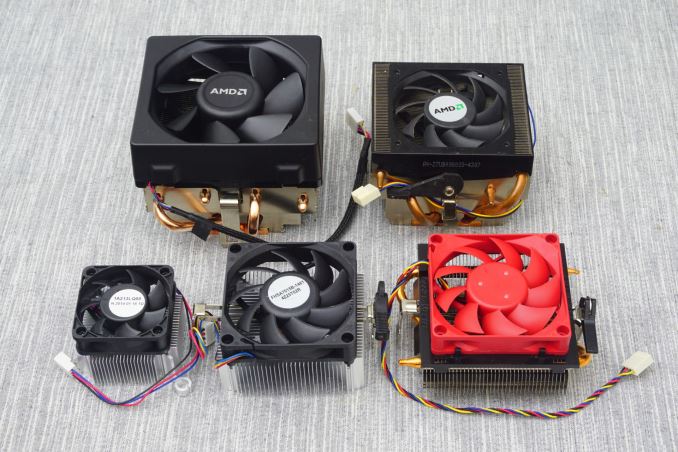
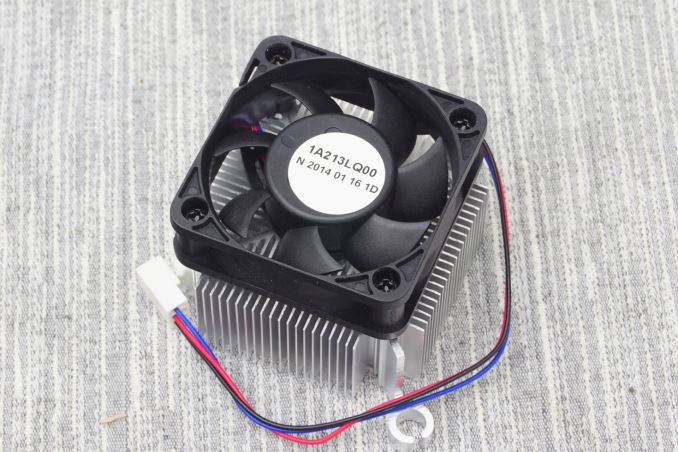
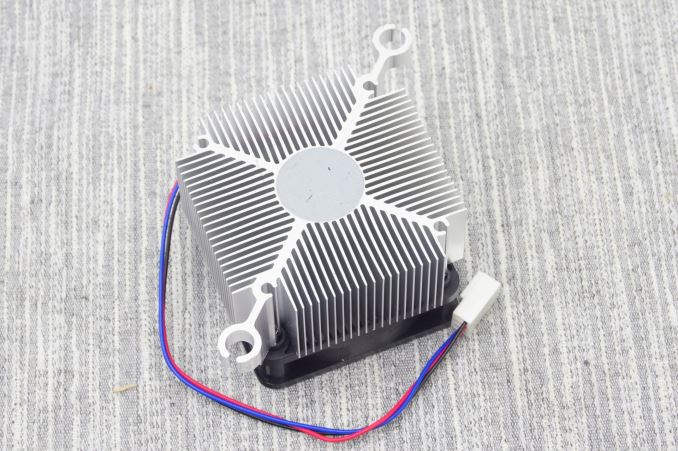
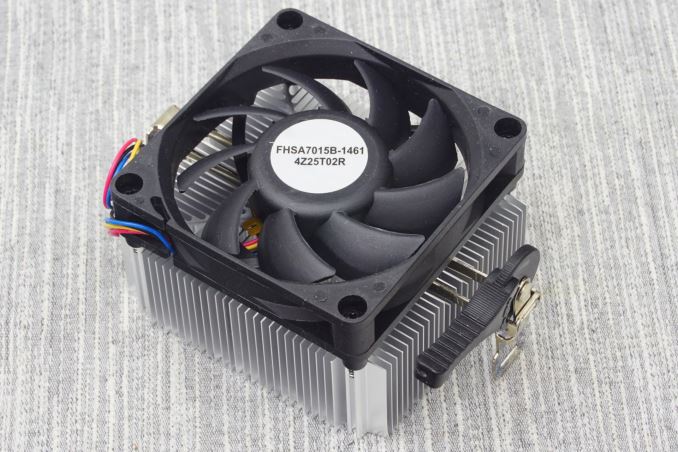
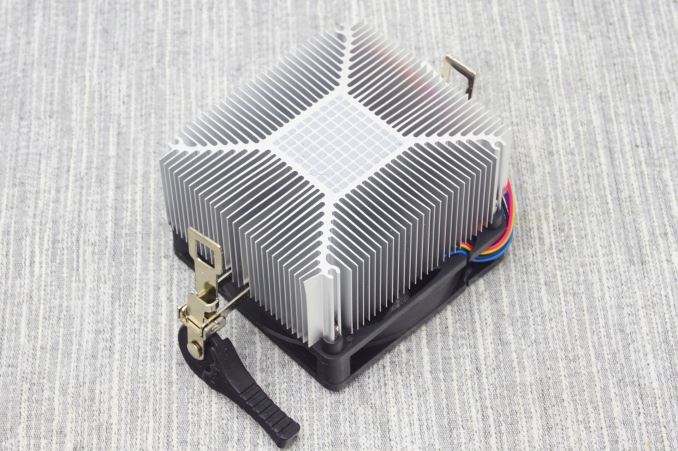
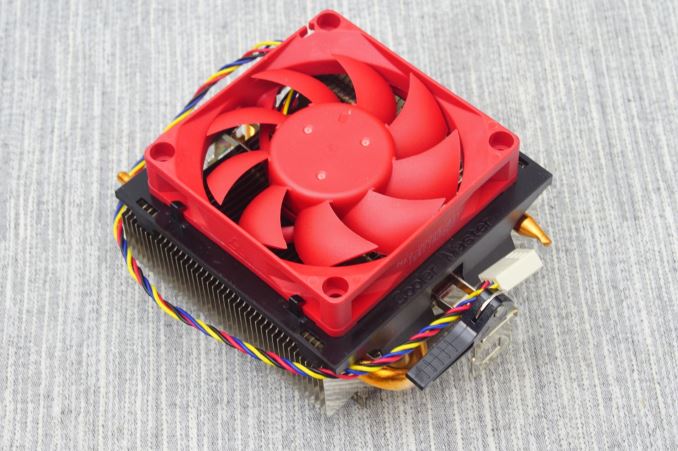
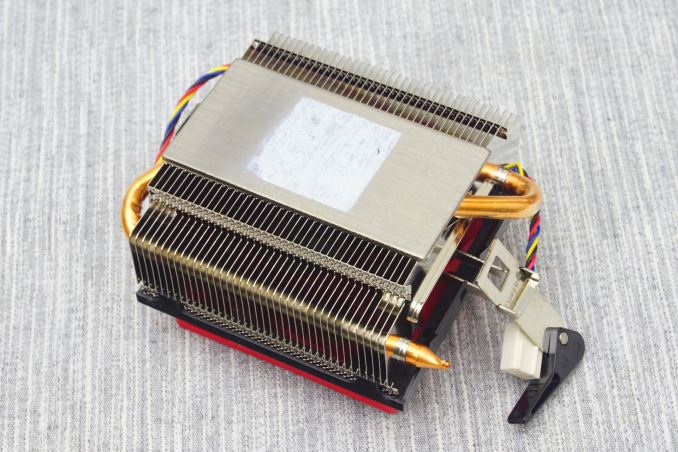
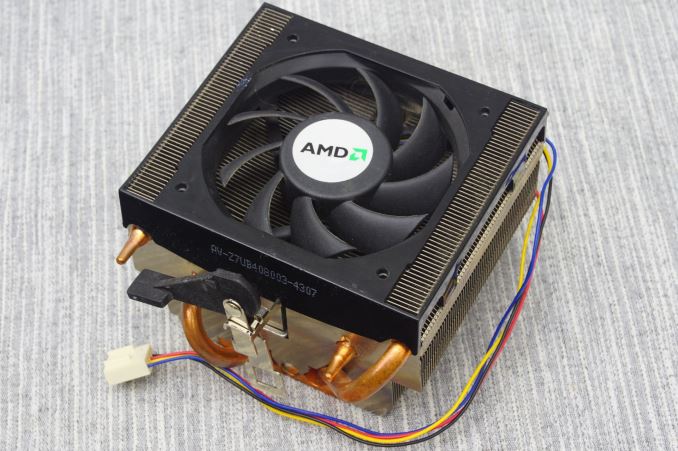
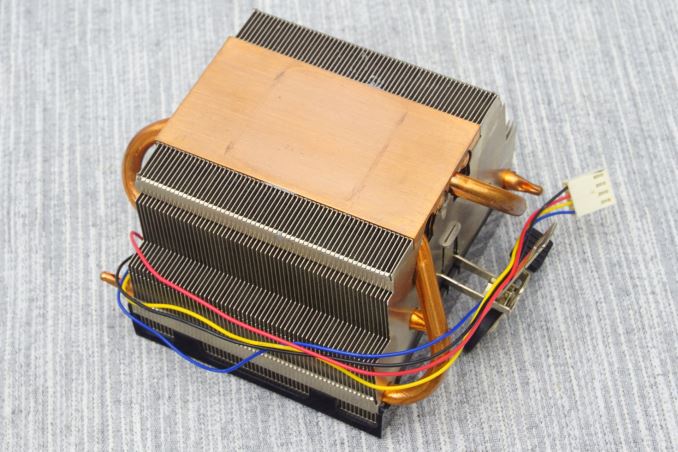

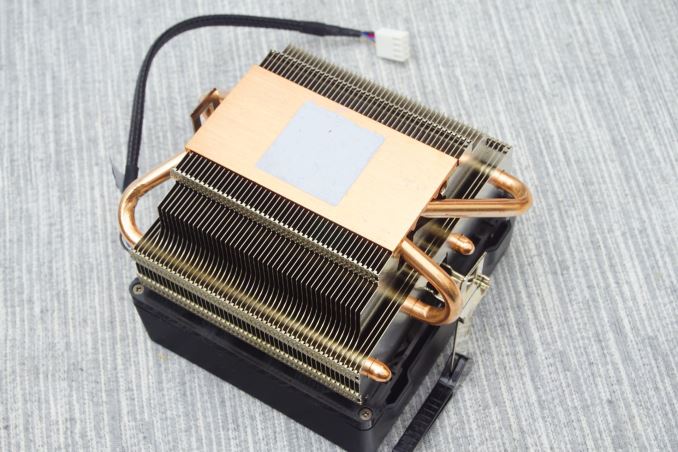








82 Comments
View All Comments
yannigr2 - Friday, July 22, 2016 - link
Your comment makes you look stupidly indeed. A company is giving a top quality cooler that saves you $20-$30 and you find it stupidly sad?SetiroN - Friday, July 22, 2016 - link
Yes, I find the fact that the best thing a CPU manufacturer's got going is their bundled cooler extremely sad.yannigr2 - Saturday, July 23, 2016 - link
Some people will find sadness in everything AMD does. At the same time they will praise Nvidia or Intel for doing the exact same thing.DanNeely - Friday, July 22, 2016 - link
I disagree. While part of this demonstrates clearly what most of us already know; most stock coolers suck. It also shows that AMD actually did deliver a good stock cooler in the Wraith. Cooling wise it matches the budget standby Cooler Master 212; and comes close to matching it in terms of sound as well making it the first stock cooler I wouldn't automatically recommend trashing for an aftermarket job.If I were nit picking, I'd've liked to've seen an affordable non-tower aftermarket cooler in the mix as well because slim profile cases don't have room for big towers. OTOH by including a 212 in the mix this article can be used as a baseline to compare testing results on them elsewhere.
A5 - Friday, July 22, 2016 - link
Meh. If AT is going to get back in the CPU cooler review game, this is a good place to start for two reasons.1) Make sure they're starting from a good assumption (stock coolers suck).
2) Compare it to the current most popular replacement.
From there, you can start adding in higher-end coolers and comparing them to the baseline.
Ratman6161 - Friday, July 22, 2016 - link
I don't necessarily agree that "stock coolers suck". They suck for most of the people who would be reading this article in the first place :) but are generally more than adequate for people running their system at stock speeds and more or less typical conditions.I think Intel has essentially taken the right approach. Bundle a good enough cooler with most CPU's since they are adequate to the task and the people using them won't know the difference anyway. Sell the "K" CPU's without a cooler. If you are buying a K, then then you are probably also a person who wants to chose their own cooling solution too. Everybody wins.
JoeyJoJo123 - Friday, July 22, 2016 - link
Except in the latter case you're actually losing.They USED to bundle the stock cooler, and even if it wasn't used permanently, it was certainly useful for testing boot or as something to hold you over until you save another ~$100 for an all-in-one CLC that couldn't fit your initial PC budget.
I'd be all in if the lack of the stock cooler also meant they dropped prices on those same kinds of CPUs, but the prices actually went up AND they lost the stock cooler. Double loss for the consumer.
mikato - Thursday, July 28, 2016 - link
I bought non-K Intel CPUs (and AMD CPUs) and aftermarket coolers. Up to this point, I had useless stock coolers that NEVER got used since most of the time I bought a decent aftermarket cooler at the same time I build the computer. There is no point selling them on ebay. They were just an unfortunate waste of resources.So now I appreciate both strategies. Either don't include a cooler (and its price), or include a decent budget cooler (for less added price than a low-end aftermarket cooler). Both work for me. But as you say, if Intel hasn't passed on that cost saving then that isn't good.
It would be interesting to know how many people that build their own computers also use a non-stock CPU cooler (excluding the higher end Intel and AMD's Wraith). And how has that evolved over time since CPUs produce less heat now, and since budget coolers have improved quite a bit for their price.
To me water cooling is just plain unnecessary and has been for a long time. Air cooling does easily well enough, for less money, and less hassle. You don't get much for spending the extra money.
JonnyDough - Monday, August 1, 2016 - link
Best comment. I have about 18 desktop PCs, all of them from the last 6 years or so. Only one has a stock cooler and that's my HTPC, because it's so watt that it's quiet with the stock and sits in my living room far from me. I also think water cooling is a waste, when all one needs is a good cooler and some case fans. Water cooling nets just a few degrees difference in ambient case. If your VRMs are getting hot because the mobo maker didn't put a heatsink on it, just throw some cheap heatsinks on it.dishayu - Friday, July 22, 2016 - link
It IS useful. It helps put definite numbers to the theory that we already know to be true (that stock coolers suck). It tells users how much of a benefit they would get, going from their stock cooler to a 212 Evo (and subsequently other coolers they test in the future).This is good work, show some respect.